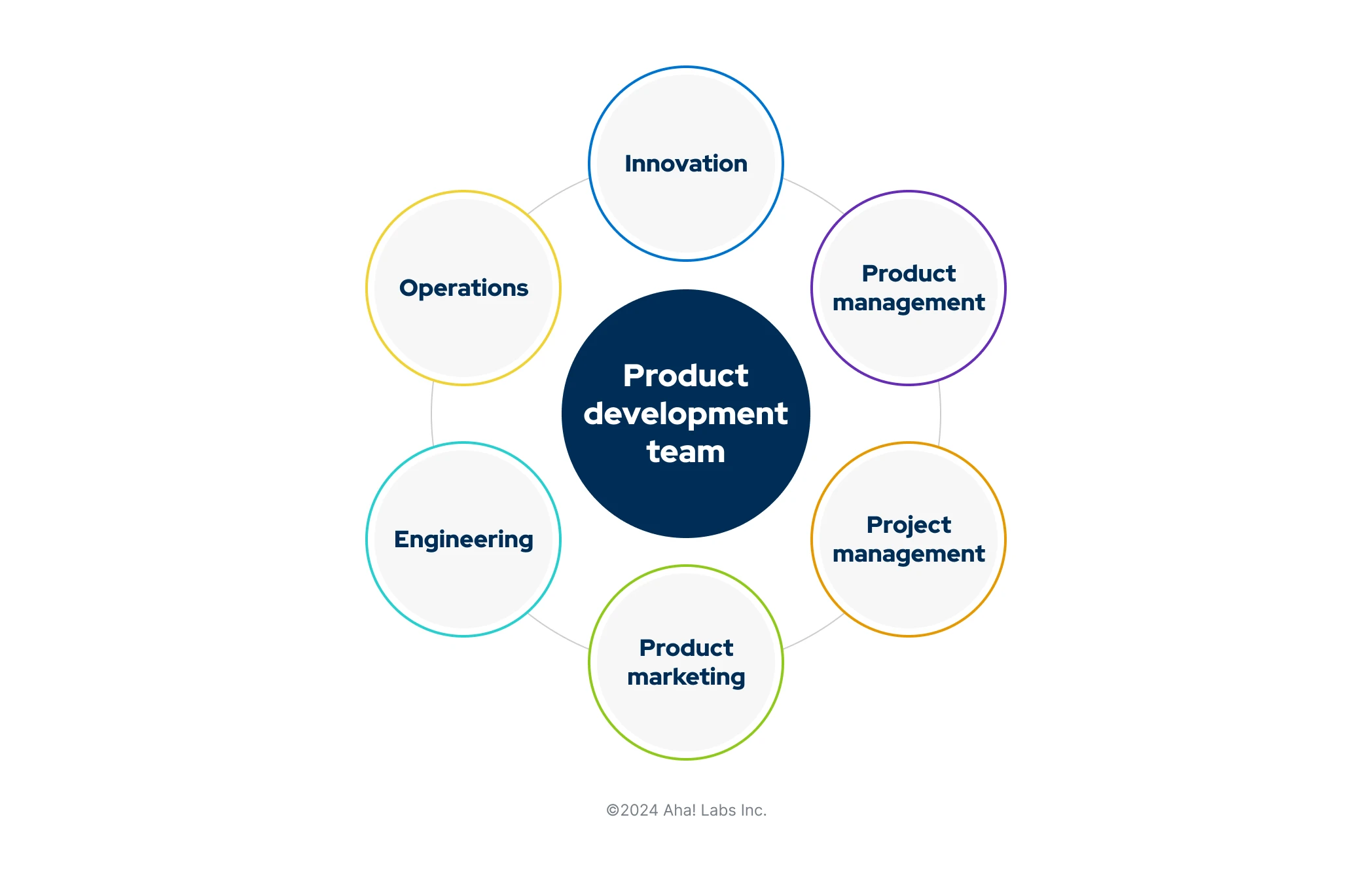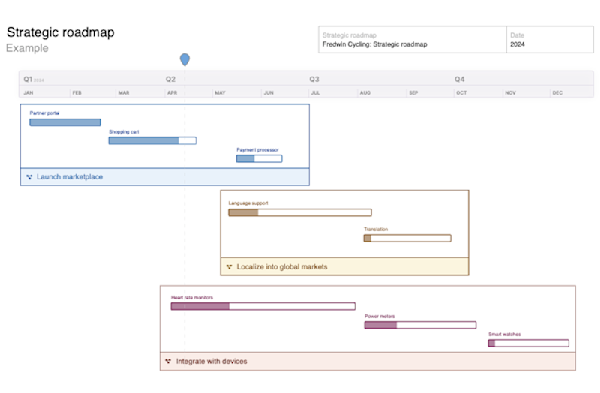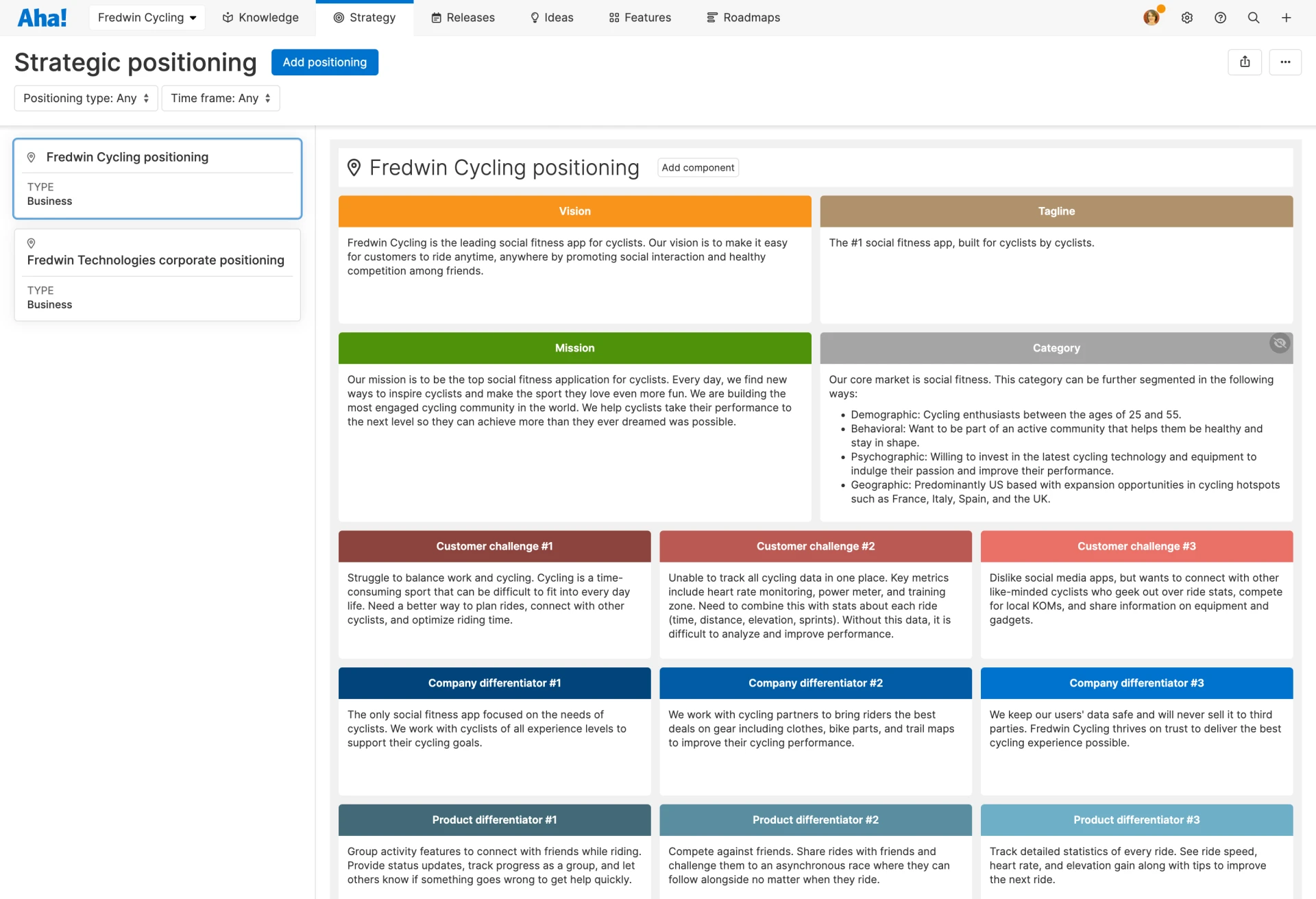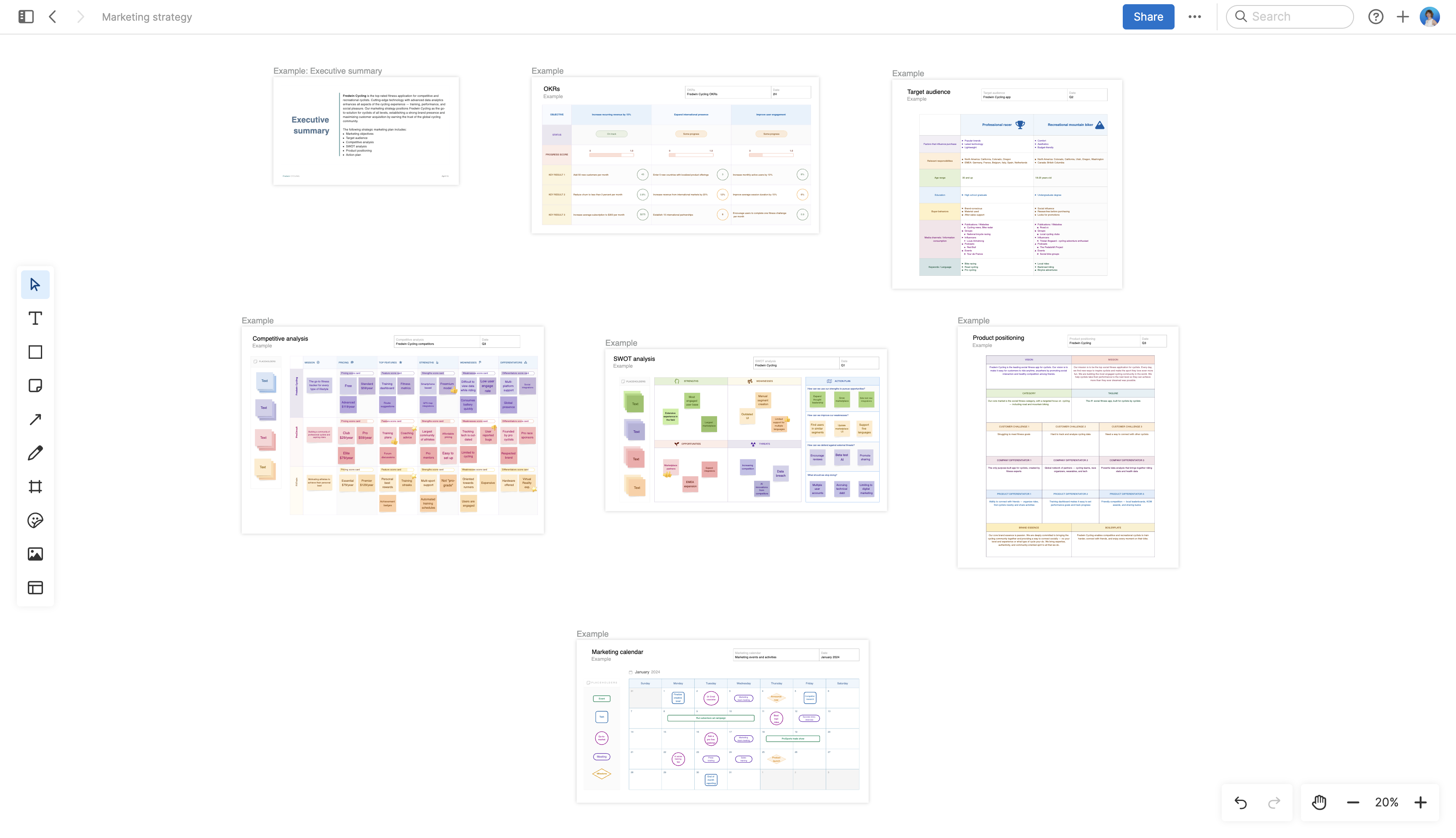The basics of product marketing — from positioning to launch
Last updated: November 2024
How do you tell your product's story? And how do you make sure the right people hear it? Product marketing revolves around finding the answers to these questions. From crafting positioning to promoting a product launch, product marketing is how organizations share the unique value of their products with the world — including their own team.
Deliver winning product marketing plans. Try Aha! software.
As the name suggests, product marketing bridges elements of product management and marketing with an emphasis on understanding customers. So, whether you are a product manager or a marketer (or simply new to the topic and are curious to learn more), this guide will help you learn the essentials of what product marketing entails and its purpose within an organization. Jump ahead to any section:
What is product marketing?
Product marketing is the process of communicating a product's unique value to customers and internal teams alike. This means articulating what customers are struggling with, how the product or service can solve their problems, and what sets the product apart in the market.
For customers, product marketing aims to translate technical functionality into marketing messages that are compelling, yet simple to understand. The goal is to provide customers with enough information about your product's functionality and how it can solve their problems in order to make a purchase.
For internal teams, product marketing helps those in customer-facing roles know how best to describe the unique benefits of your product. Product marketing teams also keep track of shifts in the market and share this information with the organization.
To accomplish this, product marketers help create buyer personas, conduct competitive analysis, craft messaging and positioning, and create go-to-market strategies, among other tasks. (More on this below.)
Related:
How does product marketing collaborate with other teams?
At most organizations, product marketing is a highly collaborative function — intersecting with product management, marketing, and customer-facing roles (such as those in sales or customer success). Here is a brief look at how product marketing interacts with each of these groups:
Product management: Collaborates to understand the market and customer needs; develops messaging that highlights key feature benefits
Marketing: Contributes to broader campaigns, decision- or purchase-level content, and go-to-market strategy — helping to keep the product story consistent across all channels to build interest and engagement
Customer-facing teams: Provides tools such as positioning and competitive insights to aid customer conversations; gathers feedback from sales and support to keep messaging sharp and relevant
In terms of organizational structure, product marketing typically sits within the broader marketing department (alongside content marketing, digital marketing, etc.). But product marketers are also often part of product development teams: formalized, cross-functional groups that include product management, engineering, and more.

For product marketing, the closest connection here is with product management. (In fact, product marketers often collaborate most closely with product management rather than other marketers.) We often say that product managers define the "why," "what," and "when" for the product — meaning the product strategy, which features to build, and the delivery timeline. Product marketers are responsible for translating that "why," "what," and "when" into engaging messages and sharing them with the target audience across different channels.
For that reason, product marketing is typically involved in product team meetings throughout the product development lifecycle. They soak up valuable context that will matter to customers and make a note of which messages an audience engages with most. More importantly, product marketing leads the go-to-market strategy for the product team, which outlines detailed plans for introducing newly released features to existing users and promoting them to potential customers.
By highlighting the benefits of the offering clearly and convincingly, product marketing helps differentiate your product and increase both demand and usage. No matter what type of product or service your company provides, a strong product marketing team plays an essential role in driving the growth of the product and business.
Related:
Product marketing responsibilities and deliverables
Product marketing is involved throughout product development, helping to keep the team informed of customer needs and market trends. But it plays an especially important role during planning — shaping the messaging, audience, and go-to-market approach — and at launch, creating campaigns and materials to help get the word out.
Here are some of the key deliverables product marketing teams produce, often in collaboration with product management:
Buyer personas | Buyer personas describe your ideal customer and include key characteristics (such as their goals, challenges, likes, and dislikes). This helps other cross-functional teams craft tailored messaging that resonates. |
Case studies | Case studies (or "success stories") describe how customers achieve their goals by using your product and show how it delivers real benefits. Case studies can provide social proof for potential buyers. |
Channel partner support | Product marketers work with channel partners — such as resellers, technology partners, and service partners — to ensure they have the support and materials needed to succeed. |
Competitive analysis | Competitive analysis helps you gauge the alternate solutions available to your customers and develop differentiation strategies in response. |
Demos and events | Demos and events help illustrate and grow excitement around a product's functionality and benefits. Product marketing might present this information to an individual customer, during virtual webinar events, or as part of a conference. |
Go-to-market strategy and roadmap | Go-to-market strategy outlines your product launch plans, including how you will communicate the value of what is being released. Product marketing teams often create go-to-market roadmaps to help visualize these plans. |
Launch plans | Launch plans include all of the cross-functional activities required to support a new product or release — including marketing, sales, and support. A launch checklist can help hold everyone accountable. |
Messaging | Messaging is how you describe your product externally. It distills product value into concise statements used to guide the development of marketing activities such as website copy, advertising campaigns, social media posts, and press releases. |
Positioning | Positioning is an internally focused document that describes the unique benefits of your product or service and why customers should choose your solution. |
Press and analyst briefings | Press and analyst briefings provide an opportunity to share product news more widely. Product marketing often creates the briefing presentation about how the product addresses market and customer needs. |
Sales and support enablement materials | Enablement materials for customer-facing teams — such as data sheets, evaluation guides, or an ROI calculator — help them guide buyers through different stages in the customer journey. |
Target channels | Product marketers understand which channels their customers use to inform purchase decisions and provide channel-specific messaging to reach and engage their target audience. |




